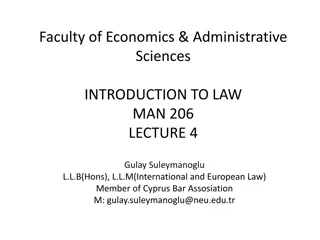Understanding Universal Law of Gravitation in Physics
Explore the concept of Universal Law of Gravitation in Physics, including gravitational force, gravitational attraction between objects, and gravitational field strength. Learn to calculate these values with equations and examples showcasing the fundamental principles of gravity.
Download Presentation

Please find below an Image/Link to download the presentation.
The content on the website is provided AS IS for your information and personal use only. It may not be sold, licensed, or shared on other websites without obtaining consent from the author. Download presentation by click this link. If you encounter any issues during the download, it is possible that the publisher has removed the file from their server.
E N D
Presentation Transcript
Universal Law of Gravitation Seo Physics
Universal Gravitation What is Universal Gravitation? Force which is directly proportional to the product of two masses Equation? G = universal gravitation constant G = 6.67 x 10-11 N m2/ kg2 m = mass of an object r = distance between the center of mass of the two objects
Gravitational Force What is a Gravitational Force? Any two masses that exert on each other Example of action-reaction pair
Practice A 1 kg object is located at a distance of 6.4 x106 m from the center of a larger object whose mass is 6.0 x 1024 kg. Find the gravitational attraction between them.
DIY Two spherical objects have masses of 1.5 x 105 kg and 8.5 x 102 kg. Their centers are separated by a distance of 2500 m. Find the gravitational attraction between them.
Gravitational Field What is Gravitational Field? Strength of field where there is a force of attraction in different planets Equation? g = G m/ r2 m= mass of planet g = gravitational field strength r = radius of planet G = universal gravitation constant = 6.67 x 10-11 N m2/ kg2
Practice Compute g at a distance of 4.5 x 107m from the center of a spherical object whose mass is 3.0 x 1023 kg.
DIY Compute g for the surface of the sun. Its radius is 7.0 x108 m and its mass is 2.0 x 1030 kg.
Important Concepts Fg exists between two masses, regardless of: the medium separating them their size or composition























